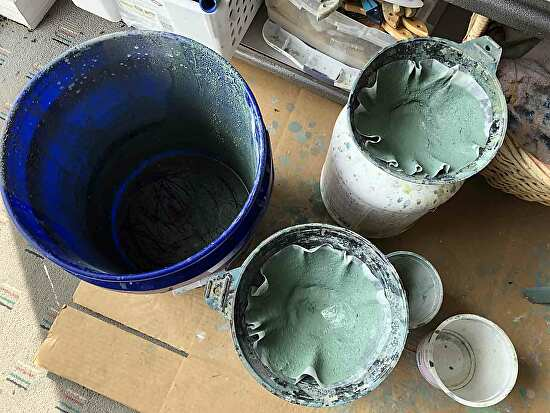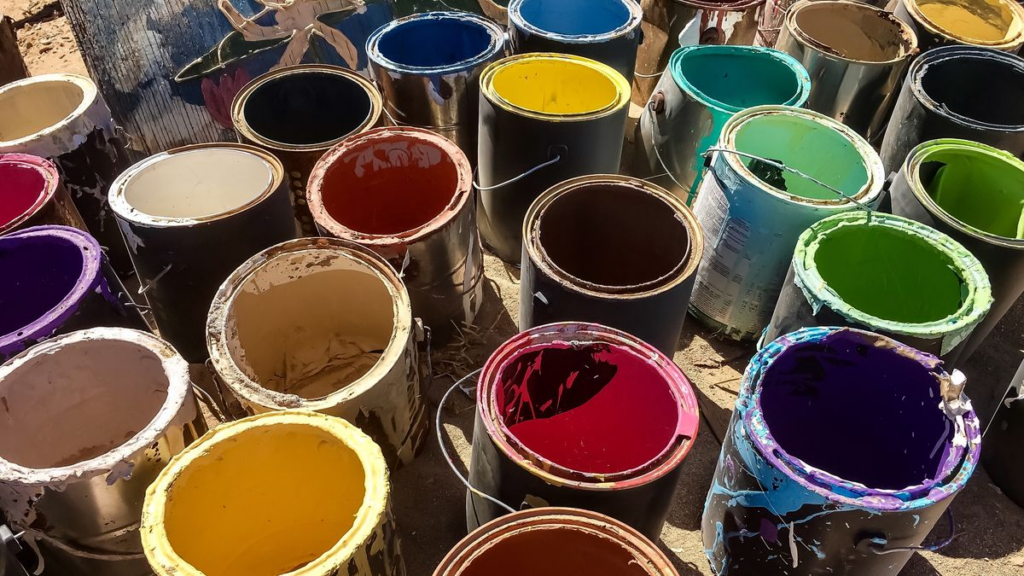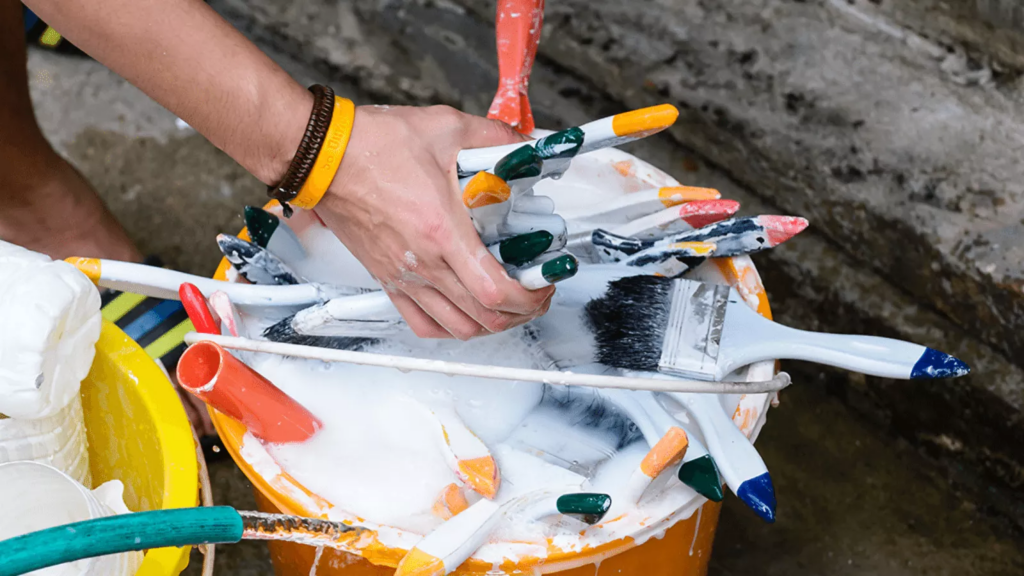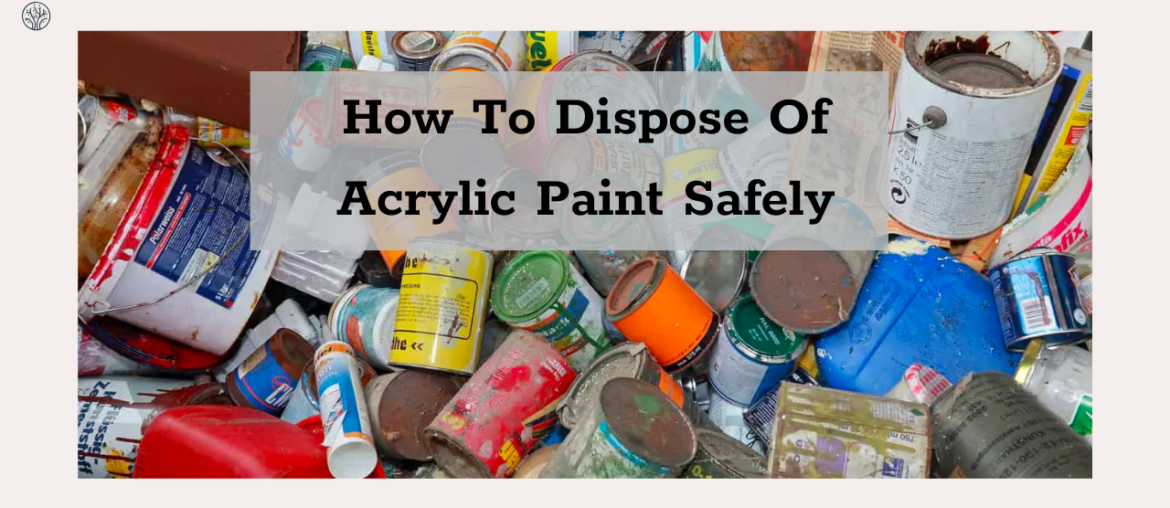Despite vibrant colors and creative possibilities for artists and hobbyists alike, the environmental impact and safety of acrylic paints have raised a lot of concerns. In this eco-conscious guide, we will explore the importance of learning how to dispose of acrylic paint properly and provide practical solutions for minimizing environmental harm.
Why Should You Learn How To Dispose Of Acrylic Paint Properly?
People more than often question whether acrylic paint is a hazardous waste.
Acrylic paints can be different in how toxic they are, based on what they’re made of. While acrylic paint itself isn’t always dangerous waste, some types contain harmful substances like heavy metals. These can be bad for people, pets, animals, and the environment.
- Environmental Impact: The main reason to dispose of acrylic paint properly is to protect the environment. Acrylic paints have stuff in them that can harm nature. The pigments in these paints are especially worrying because they don’t break down easily. When we throw away acrylic paint, the pigments can be a problem in landfills. They might contaminate the environment and our groundwater when it rains.
- Health Risks: Breathing in or swallowing acrylic particles for a long time can harm your health. Acrylic paint might have acetic acid, which, when in the air, can irritate your eyes. Properly disposing of acrylic paint reduces these health risks for you and others.
Now that we understand the importance of proper disposal let’s explore the eco-conscious methods on how to dispose of acrylic paint.
How to Dispose of Acrylic Paint Water

One common misconception is that it’s safe to pour acrylic paint water down the drain. This belief is not only harmful but can also lead to plumbing issues. Toxic acrylic paints, which contain hazardous substances, should never be poured down the drain. Even non-toxic acrylic paint, while water-soluble, can cause problems.
When acrylic paint water flows through pipes, it can stick and build up, causing clogs in drains. These blockages can be costly to fix for homeowners and might even disrupt local wastewater treatment facilities. Therefore, it’s important to know where to dispose of acrylic paint water safely and adopt responsible practices when disposing of it.
If you have a container filled with acrylic paint water, here’s how to dispose of acrylic paint water responsibly:
- Containment: Don’t pour leftover acrylic paint water down the drain or on the ground. Instead, cover the container with a fine-mesh lid to prevent spills and contamination.
- Evaporation: Put the covered container in a well-ventilated place. Let the water naturally evaporate. As it dries, the paint will become solid. You can use things like cat litter, sawdust, or newspaper to soak up the paint water.
- Disposal: Once the paint is completely dry, take it out of the container. You can then dispose of the paint in an eco-friendly way, depending on whether it’s toxic or not.
- If the paint is toxic, take it to your local hazardous waste facility. They have the expertise and resources to handle hazardous materials safely.
- If the paint is non-toxic, it can be disposed of in your regular trash. Make sure to check your local regulations regarding the disposal of non-toxic paint, as rules may vary.
How to Dispose of Acrylic Paint Tubes/Cans

Simply tossing away acrylic paint tubes/cans/containers filled with wet paint or liquid acrylic can have detrimental effects on soil, plants, and wildlife in landfills. Here’s how to dispose of acrylic paint tubes/cans safely:
- Empty and Dry: First, make sure to completely empty the tubes, cans, or containers. Allow them to dry completely before disposal. This helps paint dry up, reducing its environmental impact.
- Wipe Clean: Before throwing them away, thoroughly wipe the containers to remove any leftover paint residue. This simple step prevents potential contamination during recycling.
- Recycle: If the containers are clean and free of paint residue, they can be recycled. Recycling acrylic paint containers helps conserve resources and reduces waste.
- Handling Toxic Paint: If the acrylic paint is toxic, and there is any paint left, it cannot be thrown away casually. Toxic paint residues are considered hazardous waste and must be handled following specific guidelines. Contact local authorities or recycling centers to inquire about hazardous waste disposal programs in your area. Never dispose of toxic paint irresponsibly, as it poses severe risks to the environment and human health.
- Non-Toxic Paint Disposal: If you have non-toxic acrylic paint leftovers, let them dry completely. Once dry, toss them in the regular trash. Be cautious and patient during this process, as it ensures that even non-toxic paint doesn’t harm the environment.
How to Clean Paint Brushes, Palettes, or Tools
The cardinal rule of cleaning paint brushes, palettes, or tools used with acrylic paint is never to rinse them down the sink. It might seem like a convenient way to dispose of excess paint, but it can have dire consequences. Acrylic paint hardens as it dries, and this property can lead to blocked drains, damage to plumbing, and, worst of all, environmental pollution.
When acrylic paint ends up in our waterways, it can harm aquatic life and disrupt fragile ecosystems. To be a responsible artist, always avoid pouring any leftover paint or rinsing equipment into your sink. Not even small amounts or what you might consider as “little bits” should go down the drain. To avoid these issues, you should opt for a more sustainable cleaning approach:
- Wipe Off Excess Paint:
Instead of rinsing, the best way to get rid of extra acrylic paint from brushes is to simply wipe it off with a cloth or paper towel. These items can be reused, making them eco-friendly options. By wiping away the extra paint, you’ll keep your home’s plumbing safe and lessen the harm caused by acrylic paint to the environment.
For palettes, where dried paint often accumulates, use a knife or palette knife to scrape off the dried paint. Alternatively, you can peel the acrylic paint off the palette once it has dried. These methods effectively remove the paint without harming the environment.
- Soak Brushes and Tools:
For artists who use large amounts of acrylic paint or have numerous brushes and tools to clean, soaking them in a bucket of water is a good idea. Over time, the acrylic paint will harden and form a film at the bottom of the bucket. This process facilitates the removal of paint residue from your equipment.

After cleaning your brushes and tools, let the water in the bucket dry on its own. Once it’s dried up, you can toss the dried paint in your regular trash or take it to a designated waste facility. To keep animals and kids safe, cover the container with a wire mesh, and make sure it’s in a well-ventilated spot or exposed to sunlight to speed up the drying.
Conclusion
Artists should know how to dispose of acrylic paint and materials responsibly to enjoy their creative hobbies without harming the environment. By understanding the environmental and health risks linked to acrylic paint, artists can make smart choices and adopt eco-friendly disposal methods. Doing so isn’t just responsible—it’s a pledge to a greener, healthier planet.









